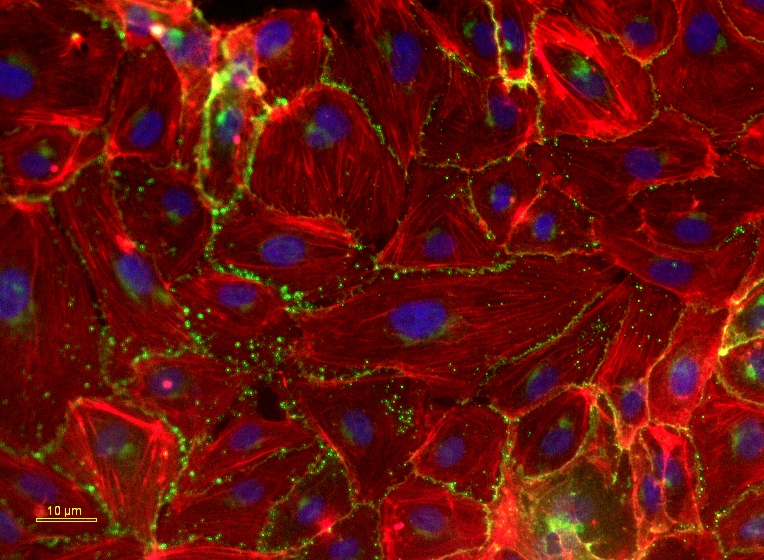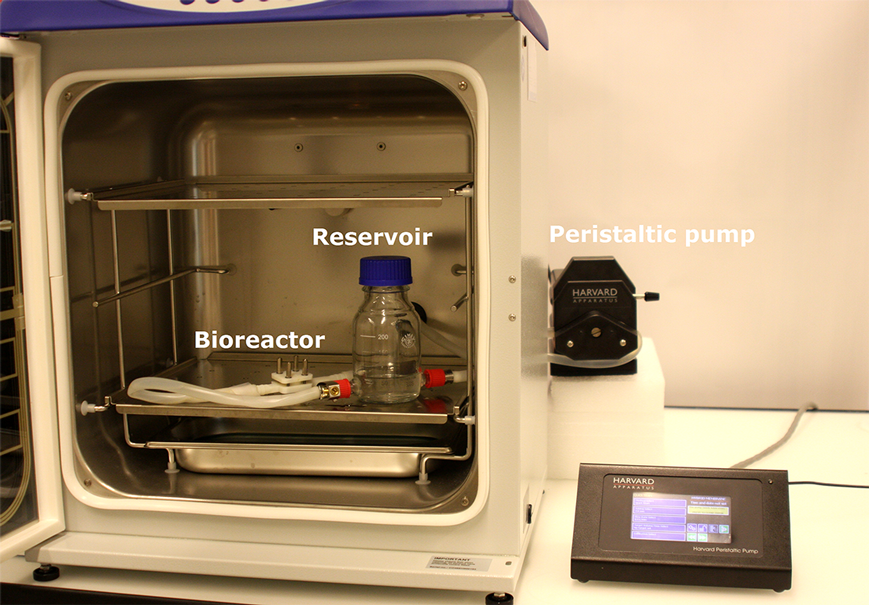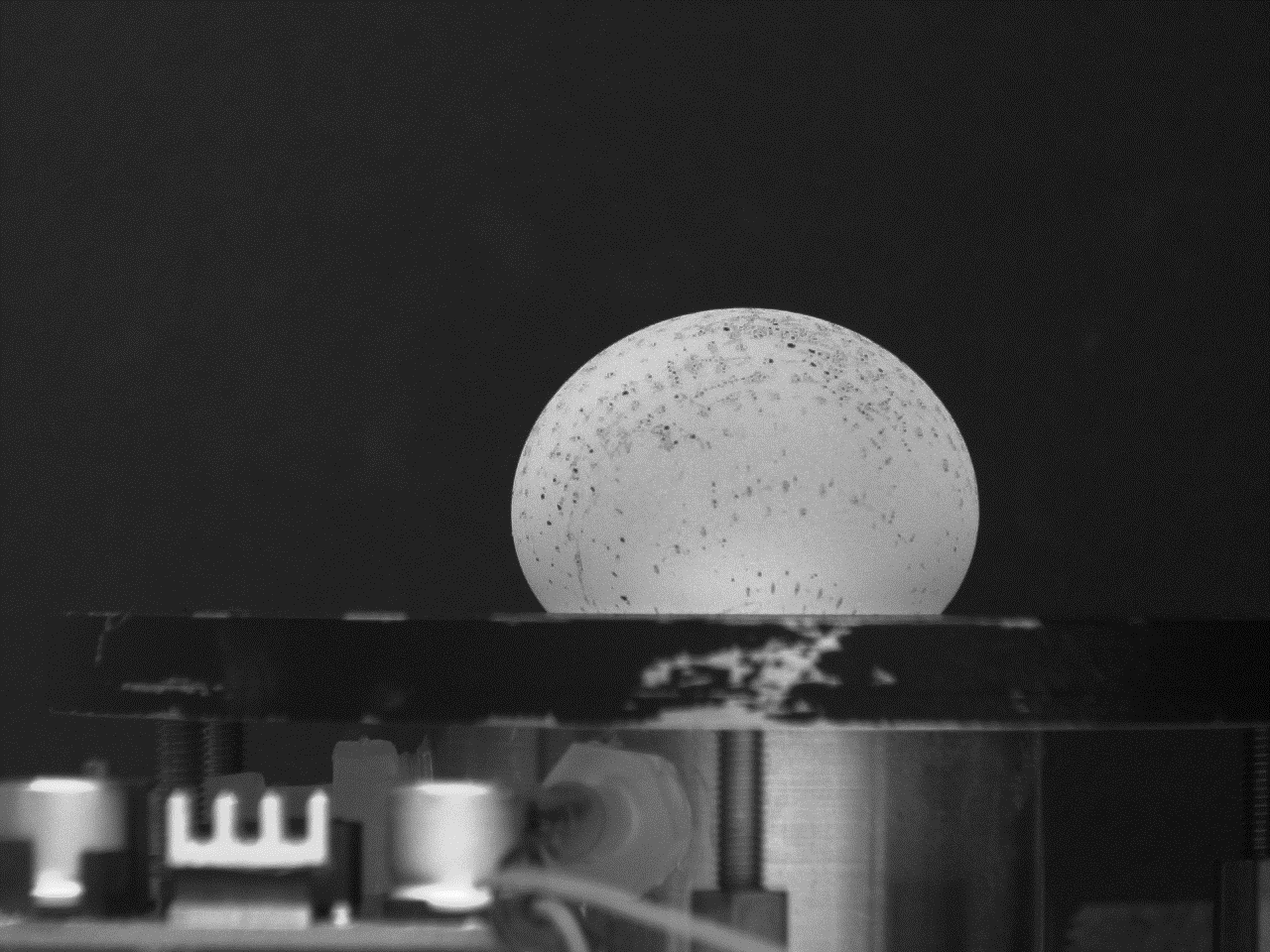Hyperelastic hybrid membrane for biomimetic blood propulsion
Over 26 million people worldwide are affected by heart failure, 6.5 million in Europe. Currently heart transplantation is the only long term solution for this disease, but its main limit is represented by transplant waiting lists. Currently some devices are employed as bridge-to-transplantation, such as VADs; however a long term alternative to heart transplantation is still not available. The external page Zurich Heart project aims at the development of a hemocompatibile, biomimetic blood propulsion system, as alternative to the modern heart failure treatments.

Endothelial cells on the hyperelastic membrane. Blue: Nuclei, Red: F-Actin, Green: Cadherin

Dynamic Bioreactor set-up
My research in this project focuses on the study of a hyperelastic synthetic membrane, key component of the propulsion system, capable of undergoing cyclic deformation (i.e. 10-20% biaxial strain for hundreds of millions of cycles) and interface the blood with reduced thrombogenic effects.
The research aims to select the best material for this application, a polymer with long term fatigue durability, low stiffness, mechanical biocompatibility; and to study the effect of combined mechanical load and shear stress on the membrane covered by a monolayer of endothelial cells. In order to achieve these goals, mechanical tests on candidate materials will be performed, including uniaxial, pure shear, inflation and fatigue tests; and a bioreactor that mimics physiological conditions will be used to analyze the cell response to the applied loads.

Project Lead
Laura Bernardi
Collaborators
external page Hochschulmedizin Zürich
Prof. Dr. med. Volkmar Falk, Division of Cardiovascular Surgery, USZ
Dr. Martin Ehrbar, USZ, Obstetrics and Gynecology
Prof. Dr. Dimos Poulikakos, Laboratory of Thermodynamics in Emerging Technologies, ETH Zürich
Dr. Aldo Ferrari, Laboratory of Thermodynamics in Emerging Technologies, ETH Zürich
This project is supported by the "Stiftung PROPTER HOMINES - Vaduz / Fürstentum Liechtenstein", the "Schwyzer-Winiker Stiftung" and the ETH Zurich Foundation. This work is part of the Zurich Heart project of Hochschulmedizin Zürich.